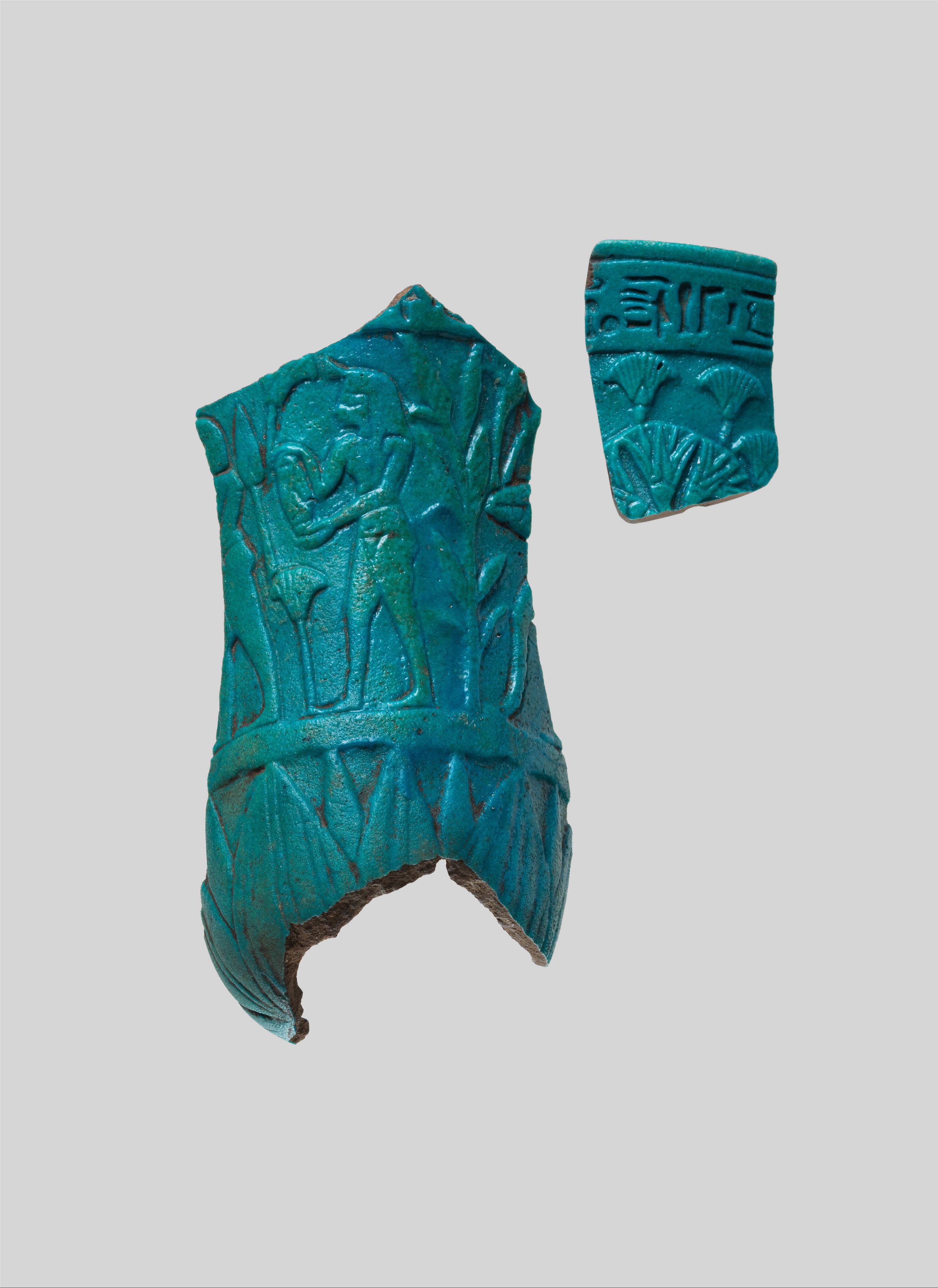Rim fragment of relief chalice with inscription and papyrus plants, associated with 1983.599
Third Intermediate Period
Relief chalices are associated mostly with Dynasty 22 (ca. 945-712 BC). The faience lotiform chalice originated in the New Kingdom and by its association with the lotus which opens with the rising sun was a symbol of resurrection and new life. In the Third Intermediate Period these chalices began to be decorated with a wide variety of relief scenes that are all in one way or other part of a cycle of myths, legends and stories connected with the birth of a child god in the marshes, who is associated with the sun god and with the king. Sometimes the specific references may not be understandable for us at least at this time, but the sense of the marsh as a magical, liminal space, much like the forest in fairy tales or in Shakespeare’s Midsummer Night’s Dream, is palpable. For the Egyptians, these themes came to the fore on various ritual and festival occasions including at the Egyptian midsummer New Year just before the waters of the inundation receded and the new growth could begin.
The fragment 2013.635 derives from the upper edge of a chalice. Part of an inscribed band around the rim is preserved; the remnant reads "for the ka of the priest of" followed by signs that, although clear enough, do not point to a clear translation before they break off. Beneath are the blossoms from the top of a clump of tall papyrus plants.
The fragment has been associated with 1983.599, a large fragment of the wall of a chalice. At the top of that fragment may be seen the lower edge of a rim band of inscription including the lower part of three signs. The figural field beneath shows a nude girl with a lotus on her head holding a drum and moving to the left. Another figure precedes her who wears a belt; and traces of another figure (a tail?) may be seen behind her. The figures are separated by vegetation: papyrus plants and buds before the processing figure, and reeds and apparently a large leaf behind her. Below a pattern of lotus leaves surrounds the base of the cup of the chalice.
There is no join between the fragments and the varying clumps of vegetation as the vessel turns do not offer any basis for association. However, inscribed chalices are rare indeed, and the proportions of the inscription band on 2013.635, the rendering of the signs, and the simple step border between the slightly raised inscription band and the figural field are very close to those on 1983.599; the latter feature in particular is distinguishing. The implied proportions of the figural fields also suit a match, suggesting a chalice including a file of figures and perhaps other figural elements separated by clumps of vegetation. The papyrus plants on 2013.635 would presumably, if there were a primary figural element, be part of the central scene as the plant most representative of the marsh.
Due to rights restrictions, this image cannot be enlarged, viewed at full screen, or downloaded.
This artwork is meant to be viewed from right to left. Scroll left to view more.



